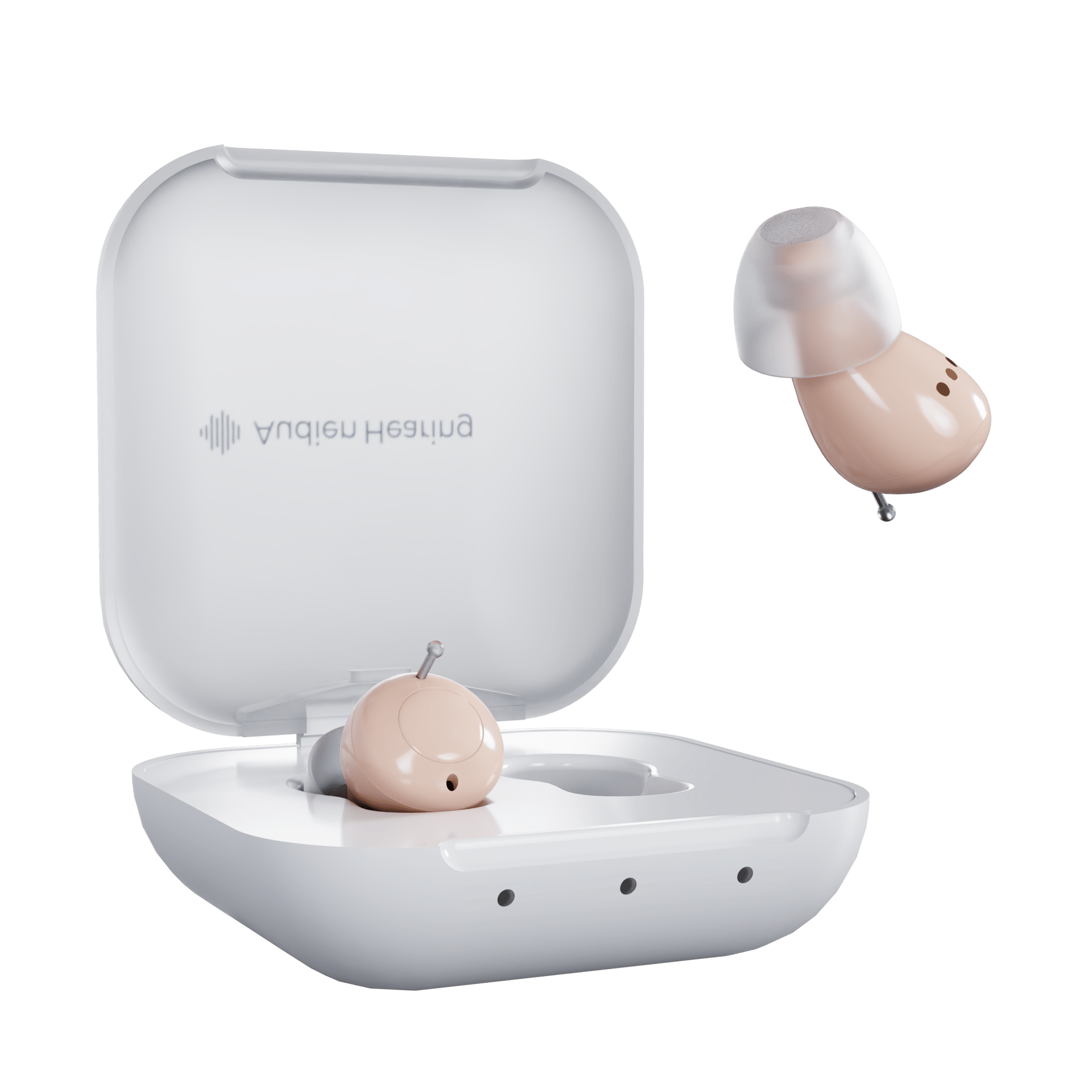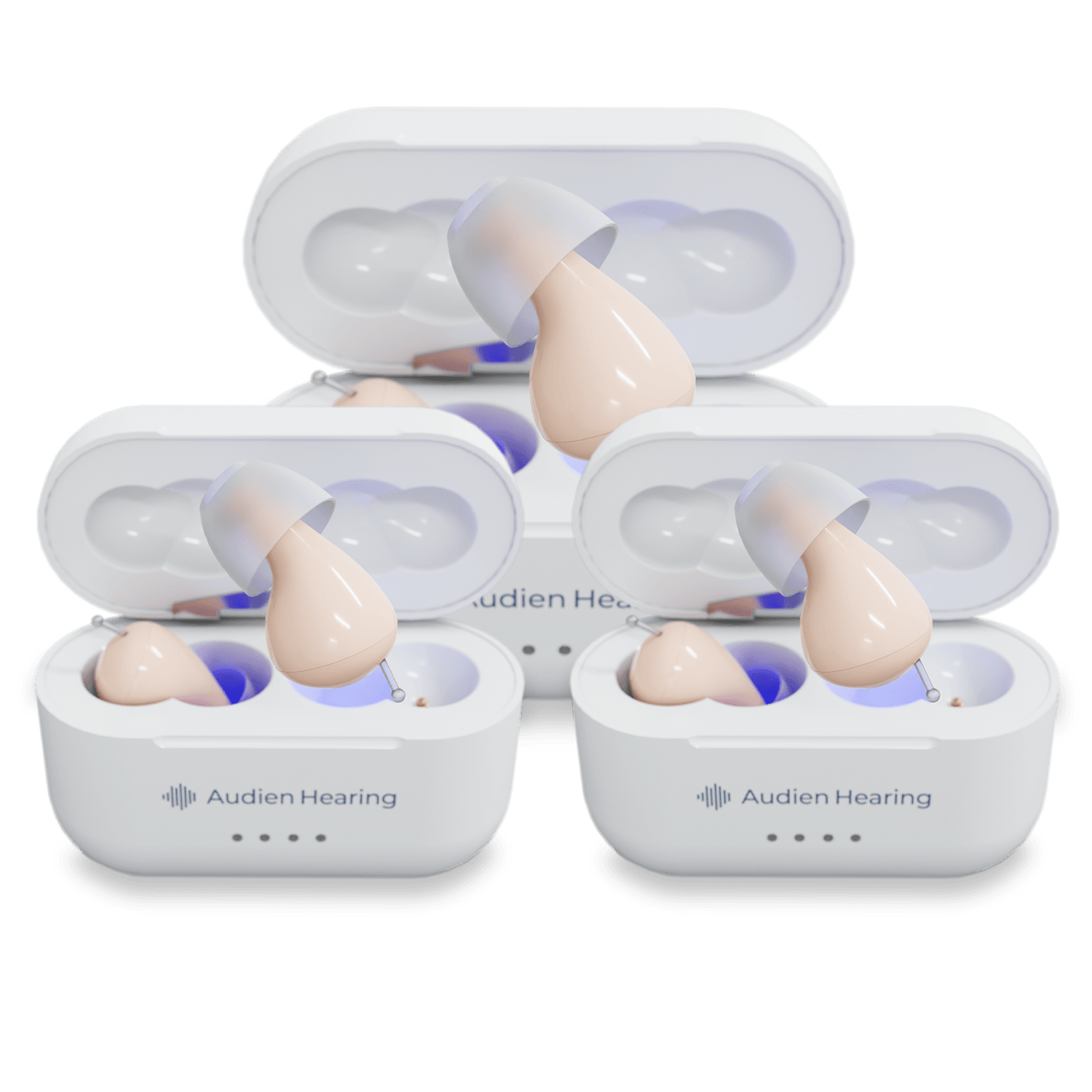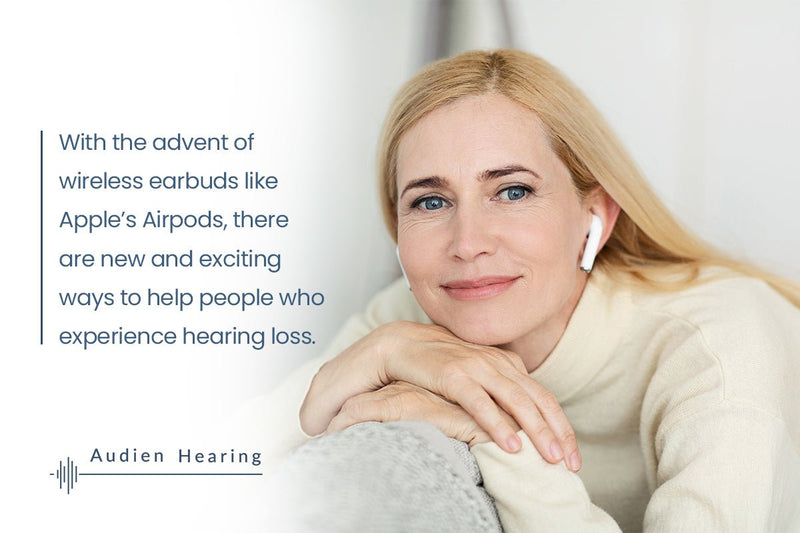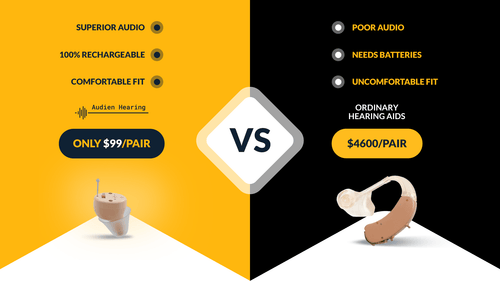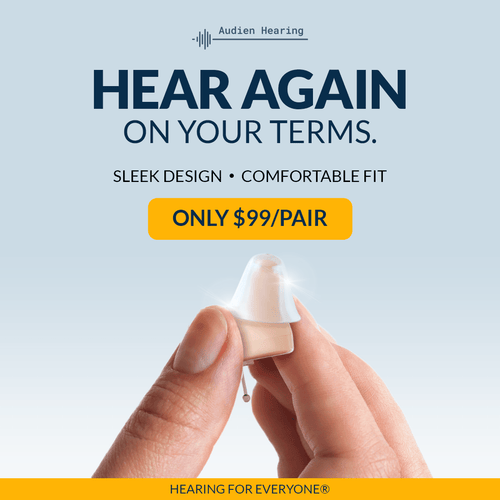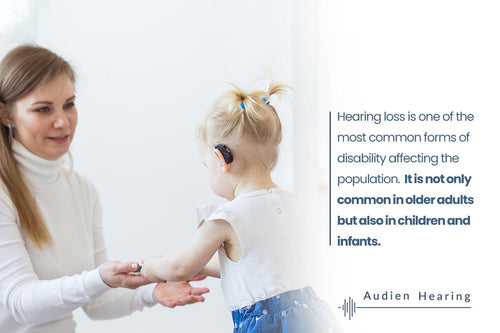Hearing aids have been around for a long time. In fact, as long as people have been experiencing hearing loss, people have been trying to create devices that help overcome this disability. With the advent of wireless earbuds like Apple’s Airpods, there are new and exciting ways to help people who experience hearing loss.
Hearing aids have been everything from what we now consider comical, like holding a huge brass horn up to your ear, all the way to cutting edge sound enhancing technology and everything in between. Hearing is such a huge part of our life experience. From the time we are born and hear our first paternal voices to discovering our favorite genres of music, the ability to interact with the world around us through sound weighs a significant part of our human development.
When a person is born without the full ability to hear, certain measures can be taken, such as hearing aids, cochlear implants, and even hearing therapy. Learning how to read lips and navigate the world without a full range of hearing is its learning curve. For those who acquire hearing loss later in their life, this disability can be devastating.
Millions of people in the United States alone experience hearing loss on a broad spectrum of severity. For a lot of people, the treatments to deal with their hearing loss involve devices like hearing aids which come in a variety of styles and types.
Hearing aids can be used to treat everything from mild/moderate hearing loss all the way to severe hearing loss. For millions of people, these devices are the most effective way to correct the effects of hearing loss and restore normalcy to their lives. But what is a hearing aid, and how does it work? What’s more, how can a hearing aid be different from a device like an Apple AirPod, and how can an Airpod help improve someone’s hearing loss?
To answer these questions - let's first understand exactly what a hearing aid actually is.
What Is a Hearing Aid?
As we traditionally know them, a hearing aid is a device that allows someone to hear certain frequencies that they have naturally lost the ability to recognize. When we experience hearing loss, we experience our decibel threshold increasing to unnatural levels.
Sounds are made up of waves of energy that travel at specific frequencies and have a natural power or force that they present with. That force or power is called a decibel. Decibels are the measurement of how loud or forceful a sound presents itself as. Think of talking to a close friend who has a very soft-spoken voice.
When you are in a quiet environment, your voice is being produced at a natural decibel level that you can easily recognize and hear. However, if you move to, say - a subway terminal, then there’s going to be a lot of sound pollution that can overcome your friend’s voice and drown it out.
This is an example of a decibel threshold, like your friend's soft-spoken voice naturally became too quiet to hear over other sounds. A hearing aid focuses on the specific frequencies that are no longer recognizable and boost them to a decibel that can be recognized again.
There are two ways of getting these devices by purchasing them over the counter or getting them via prescription. The differences between prescription hearing aids and over-the-counter hearing aids are very vast.
Prescription Hearing Aids
Prescription hearing aids can only be acquired through - you guessed it, a prescription from a medical professional. This dynamic process involves different kinds of specialists like ear, nose, and throat doctors and audiologists. It also involves expensive hearing tests that some private insurances can cover.
For many people, private insurance companies don’t cover the cost of prescription hearing aids, and Medicaid/Medicare doesn’t cover any costs for the entire process. These hearing aids do have a benefit that can help justify their high cost. Those benefits largely come from the fact a prescription hearing aid will be uniquely programmed to your exact hearing loss needs.
This unique feature means that you won't have all sound waves in general amplified, but instead, you’ll only hear the frequencies that you struggle to recognize. This can act as a much more precise method of correcting hearing loss. Also, depending on the hearing aid you get, the actual hardware will be custom built to fit your ear canal.
Over-the-Counter Hearing Aids
Over-the-counter hearing aids are mostly different from prescription hearing aids in that they are not capable of being custom programmed to your exact prescription needs. Not only that, but largely they are mass-produced as a general one size fits all system.
The benefit to these devices comes in their practical use and affordable price tags. While an over-the-counter hearing aid option won’t be fine-tuned to your specific decibel threshold deficits - it will still act as a general amplifier of sound and help boost sound waves to a more recognizable level.
This can be a good thing for many people who have mild to moderate hearing loss and don’t want to spend literally thousands of dollars on prescription hearing aids. At Audien, our signature EV1 and EV3 over-the-counter hearing aids are specifically designed to alleviate the burden of experiencing hearing loss without breaking the bank.
Our high-quality, unique hearing aid options provide an affordable service that really will impact your hearing loss journey and do so for under a hundred dollars. We currently have the smallest in-ear hearing aids on the market, and our one size fits all design has been proven to work with hundreds of satisfied clients.
By utilizing cutting-edge sound technology, we can filter out background noise, helping you distinguish between sounds that you want to hear and unwanted sound pollution.
Can I Use My Airpods As Hearing Aids?
While the EV1 and EV3 from Audien are very good options for clients over the age of 65 who suffer from mild to moderate hearing loss, what if you already own a pair of Apple AirPods? Apple has long been one of the most famous and well-known tech companies on the planet, and their signature line of wireless earbuds has ranked as some of the best of their kind on the market.
These devices do more than just play crystal clear audio streaming from your devices; they also utilize microphones and can be used for phone, Facetime, or Zoom calls. Apple typically designs their devices to work best within the Apple ecosystem, such as AirPods working best with iPhone as opposed to linking via Bluetooth to an android.
One of the features that Apple has integrated into its technological ecosystem is something called Live Listen. This unique feature helps people who suffer from hearing loss get an extra boost from their Apple devices while using their AirPods.
“Although devices such as AirPods can be very effective, they do not replace hearing aids.”- Drew Sutton, MD, Board-Certified Otolaryngologist.
So, in short, yes, an Apple AirPods can be used as a hearing aid device; however, it does not take the place of an actual medical-grade device such as prescription or even over-the-counter hearing aids.
For anyone suffering from hearing loss, the need to see an Ear, Nose, and Throat doctor and have an audiologist run a diagnostic battery of tests will still be very real. Apple’s AirPods don’t mean you shouldn’t or do not have to seek actual medical help - but they can add a tool for you to use on your hearing loss journey.
Live Listen - How It Works
The unique feature behind Live Listen is that it will actually use your Apple device, such as an iPhone, iPad, or iPod touch, to become the microphone. These devices are already built with incredible microphones designed to pick up specific frequencies, such as voices in crowded environments.
When you activate Live Listen, you are using your iPhone, iPad, or iPod touch’s microphone to hear, and the audio is being streamed right to your Apple AirPods.
To Activate
To activate this feature, simply make sure that your Apple device is updated to version 14.3, and you can do so through the software update option in settings. Once you’ve affirmed this, go to the control center settings and select the ‘Listen’ button that looks like a blue ear. Add it to your control center and then access the control center via the pull-down menu.
Then finally, tap the ear icon to turn on Live Listen and set your phone down near the source of the sound you want amplified - and it’s that easy! The phone will begin to stream the audio it picks up to your AirPods, and you are good to go!
Sources:
Hearing Aid History: From Ear Trumpets to Digital Technology | EMBS
Quick Statistics About Hearing | NIDCD
Use Live Listen with AirPods, AirPods Pro, AirPods Max, or Powerbeats Pro | Apple.com


